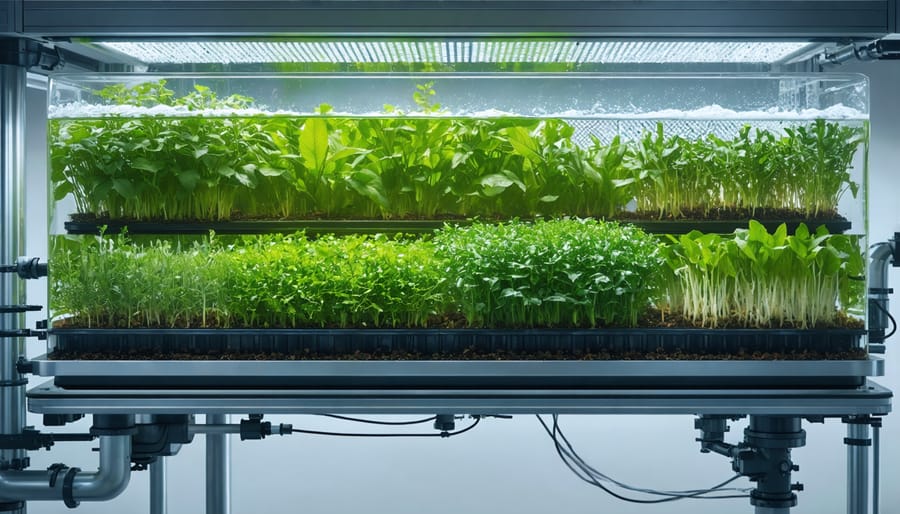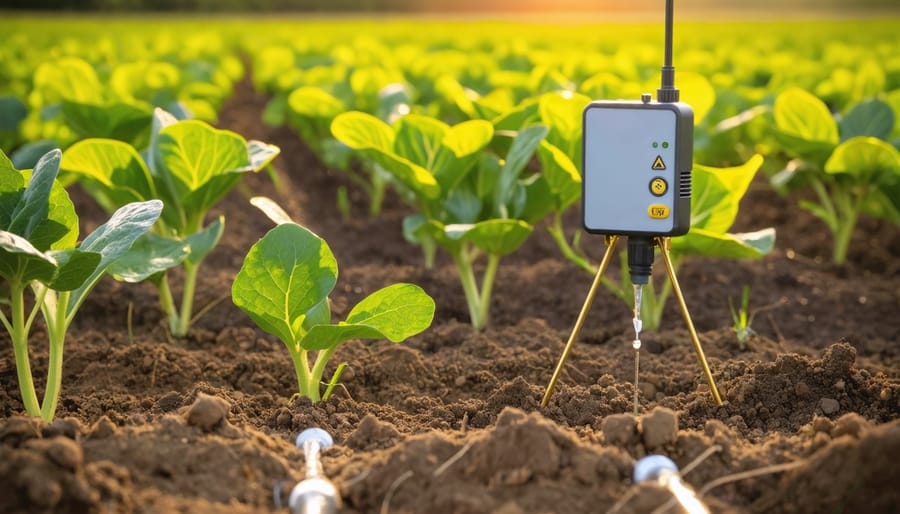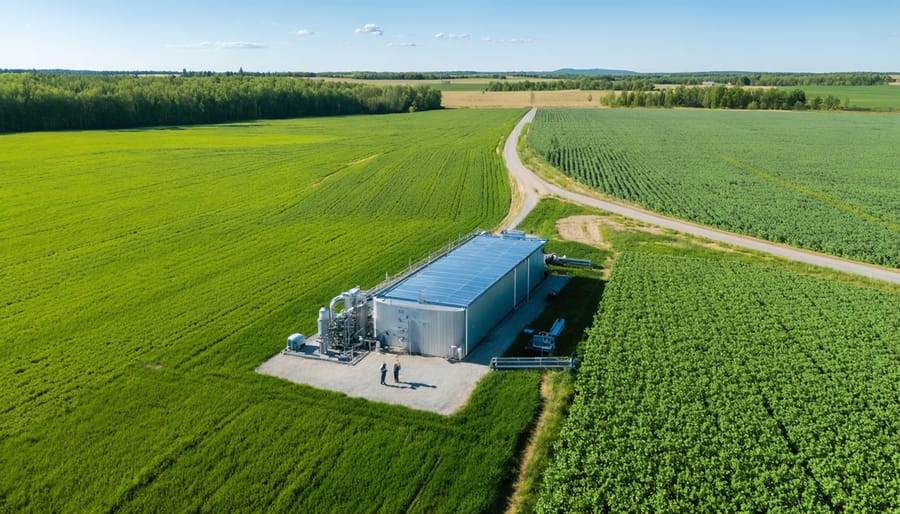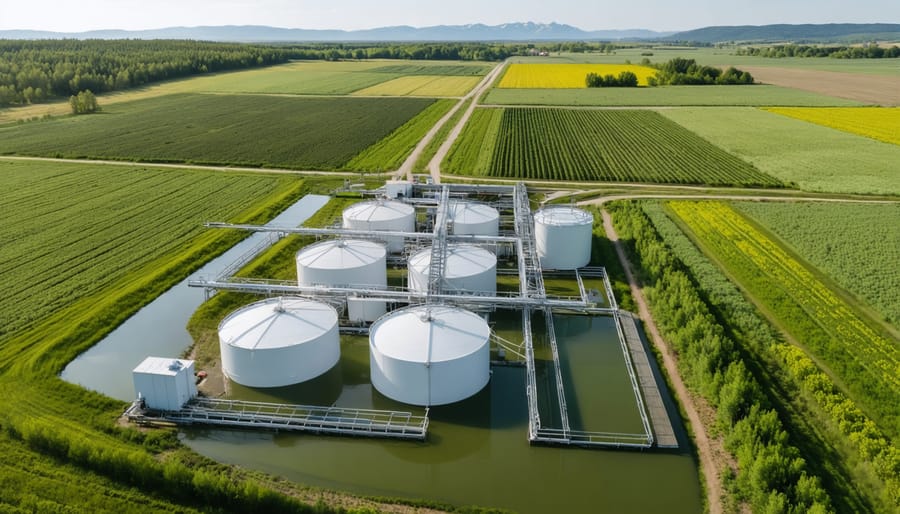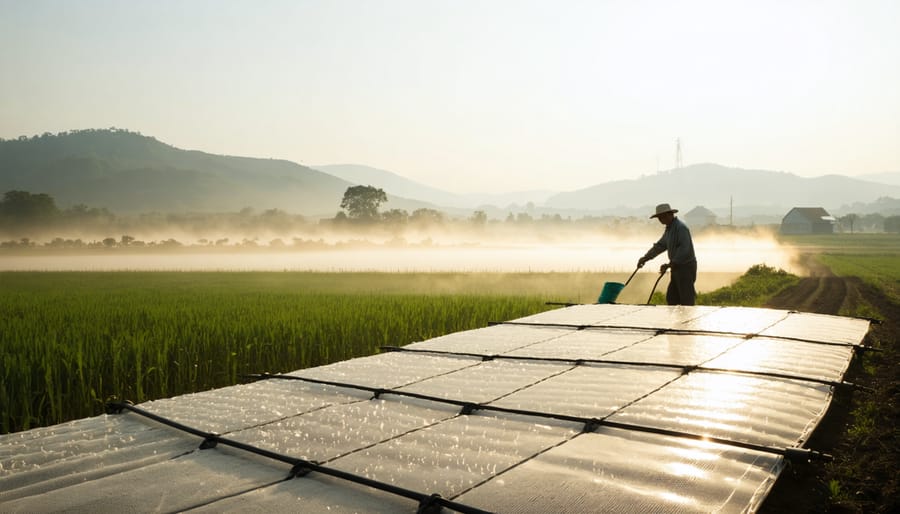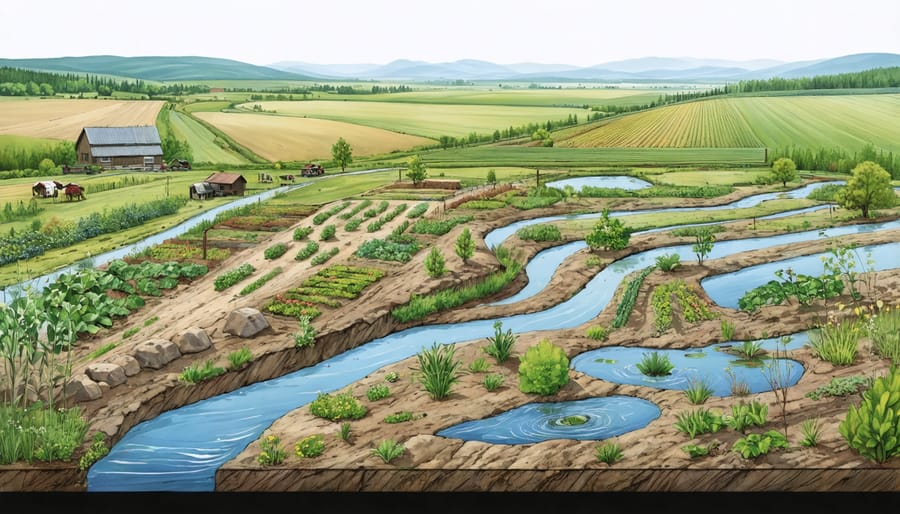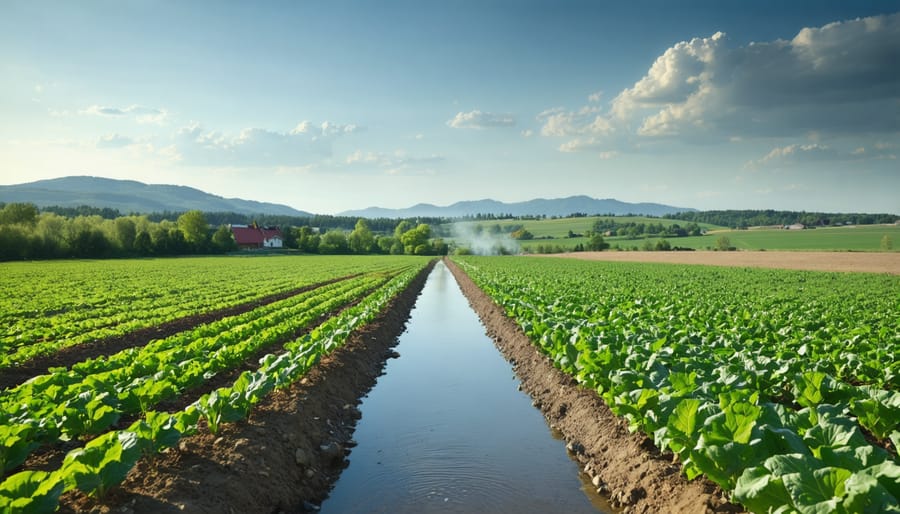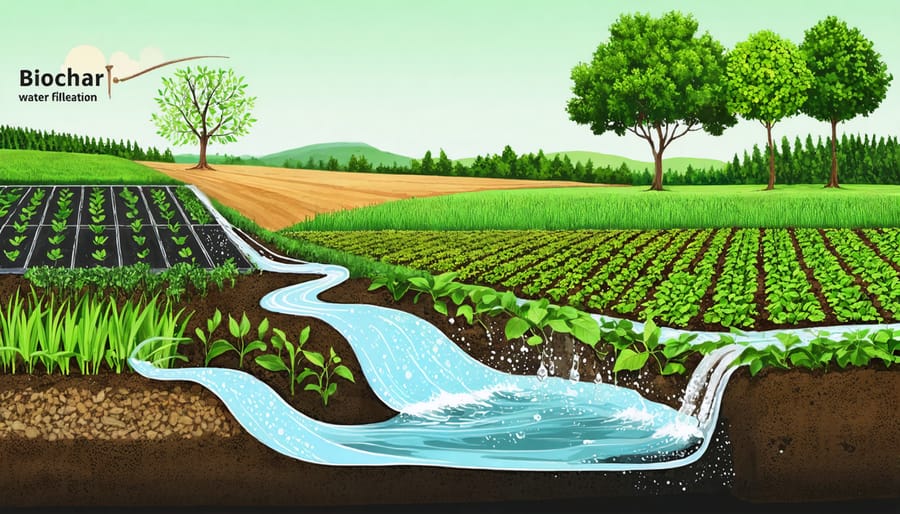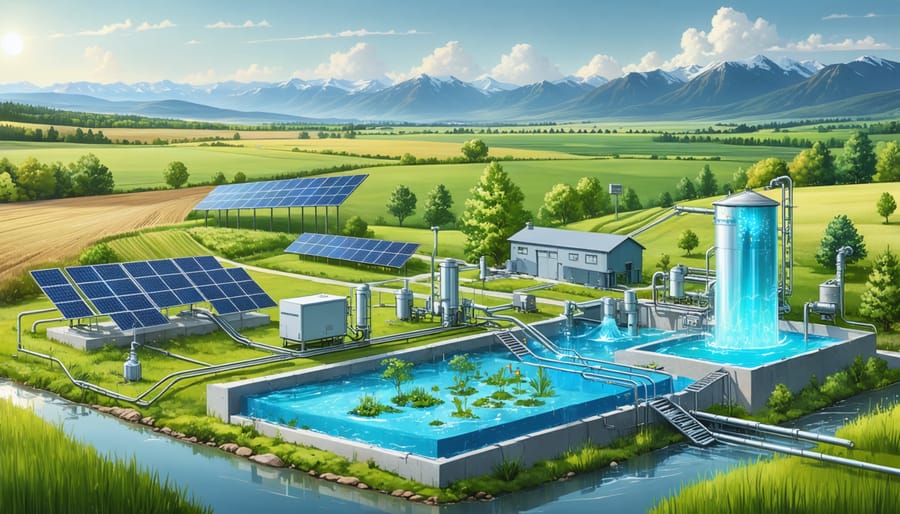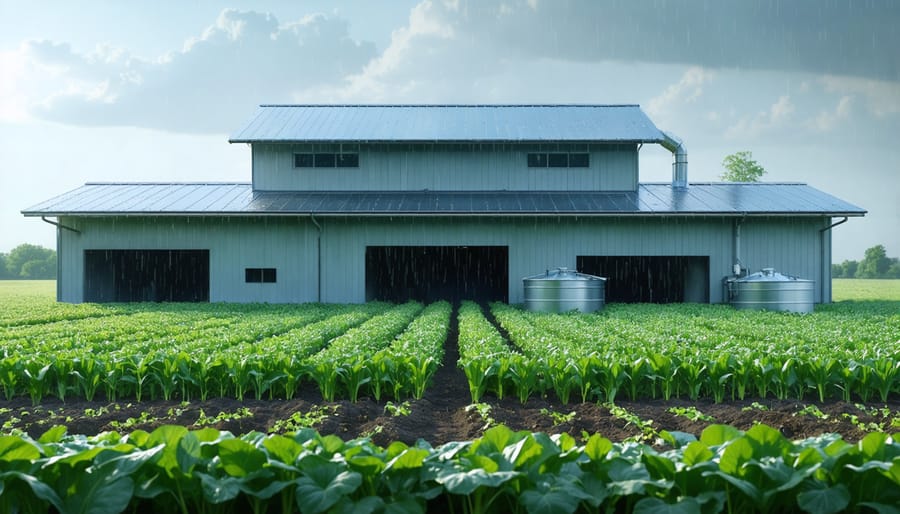Revolutionizing sustainable agriculture, organic hydroponic systems merge the precision of soilless cultivation with ecological integrity. In Alberta’s evolving agricultural landscape, these systems have emerged as game-changers, offering farmers a viable path to year-round organic production while conserving up to 95% more water than traditional farming methods. By integrating natural biological processes with controlled environment agriculture, organic hydroponics delivers premium-quality produce that meets stringent Canadian organic certification standards while maximizing resource efficiency.
The fusion of organic principles with hydroponic technology addresses critical challenges facing modern agriculture – from climate unpredictability to increasing consumer demand for local, organic produce. Progressive farmers across Alberta are discovering that these systems not only enhance crop yields and quality but also significantly reduce environmental impact through closed-loop nutrient cycling and minimal water waste. This innovative approach represents a crucial step forward in sustainable farming, offering a practical solution for growers seeking to maintain organic integrity while leveraging the benefits of controlled environment agriculture.
The Marriage of Organic and Hydroponic Farming
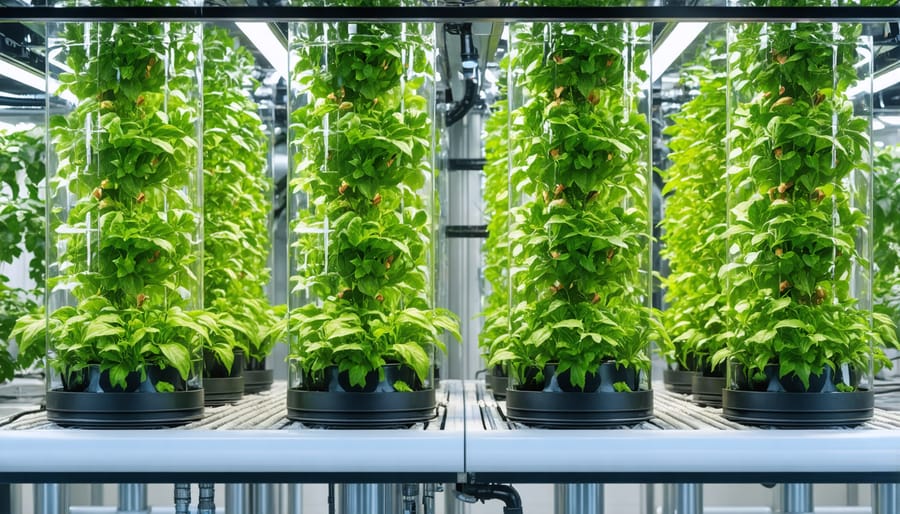
What Makes a Hydroponic System Organic?
To qualify as organic, hydroponic systems must align with organic farming principles and meet specific certification requirements. In Canada, organic hydroponics must use approved natural nutrients and growing media while avoiding synthetic pesticides and fertilizers. The system’s water source must be free from prohibited substances, and all growing solutions must be derived from natural sources like compost tea, fish emulsion, or approved mineral supplements.
Key requirements include using organic seeds when available, implementing natural pest management strategies, and maintaining detailed records of all inputs and processes. Growing media must consist of approved materials such as coconut coir, organic peat moss, or verified organic compost. Alberta farmers have successfully achieved organic certification by incorporating beneficial microorganisms and natural mineral supplements into their hydroponic systems.
Regular testing of water quality and nutrient levels is essential to maintain organic status. Third-party certification bodies conduct annual inspections to ensure compliance with Canadian Organic Standards, examining both the growing system and documentation of practices. Many local producers have found that meeting these requirements actually improves their overall system efficiency and product quality.
Natural Nutrient Solutions
In organic hydroponics, nutrient solutions must come from natural, sustainable sources. Many Alberta farmers have found success using compost tea, worm castings extract, and fish emulsion as base nutrients. To prepare compost tea, steep high-quality organic compost in dechlorinated water for 24-48 hours while aerating continuously. A ratio of 1:5 compost to water typically yields optimal results.
Local organic dairy farmers often contribute whey, which can be fermented with molasses to create a calcium and micronutrient-rich solution. Marine-based ingredients like kelp extract provide essential trace elements and growth hormones, while rock dust minerals ensure proper plant development.
When mixing natural nutrients, start with a base solution at quarter strength and gradually increase concentration while monitoring plant response. Regular testing of pH levels is crucial, as organic solutions tend to fluctuate more than synthetic ones. Many successful Alberta greenhouse operators maintain pH between 5.8-6.2 using natural pH adjusters like citric acid or potassium bicarbonate.
Remember to filter all organic solutions through a fine mesh (400 microns or smaller) to prevent clogging in irrigation systems. Store solutions in a cool, dark place and use within 48 hours for best results.
Water Recycling Technology in Organic Hydroponics
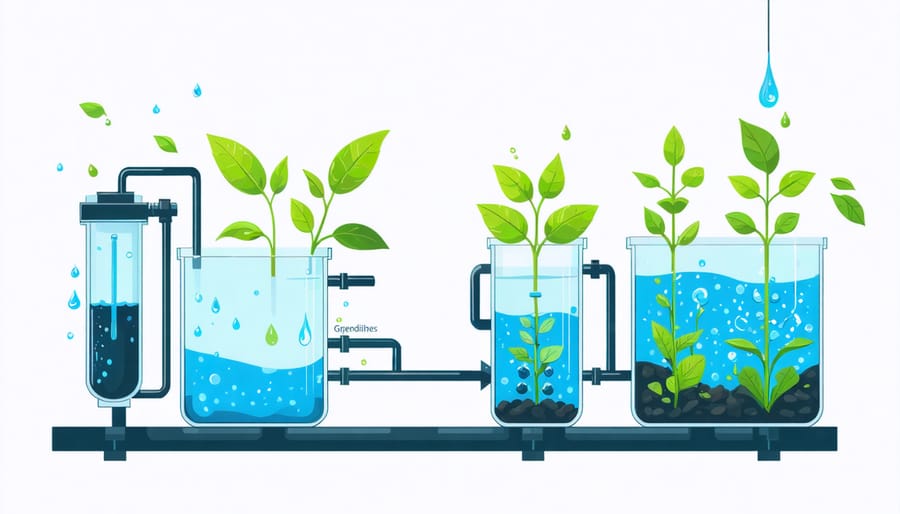
Filtration Systems for Organic Solutions
In organic hydroponic systems, effective filtration is crucial for maintaining water quality and plant health while adhering to organic certification standards. Our Alberta farmers have found success with a two-pronged approach combining biological and mechanical filtration methods.
Biological filtration relies on beneficial microorganisms to break down organic waste and convert harmful compounds into plant-available nutrients. Many local growers use biofilters containing natural media like lava rock or expanded clay pellets, which provide an ideal habitat for these helpful bacteria. These systems typically include a separate bio-chamber where water passes through the colony of beneficial microorganisms before returning to the main growing area.
Mechanical filtration, on the other hand, removes solid particles and debris from the nutrient solution. A common setup involves a series of filters with decreasing mesh sizes, starting with larger particles around 200 microns and working down to finer filtration at 50 microns. Many Alberta greenhouse operators use sustainable materials like coconut coir and organic cotton filters, which can later be composted.
For optimal results, both filtration types should work in tandem. Ron McKenzie, an organic hydroponic farmer near Red Deer, suggests starting with mechanical filtration to remove larger particles, followed by biological filtration to handle dissolved organic matter. “This sequence helps extend the life of your biological filters while ensuring your system meets organic certification requirements,” he explains.
Remember to monitor filter performance regularly and clean or replace components as needed, typically every 4-6 weeks depending on your system’s size and crop load.
Monitoring and Maintaining Water Quality
Regular monitoring and maintenance of water quality is crucial for the success of your organic hydroponic system. Modern water quality monitoring systems help farmers track essential parameters like pH, electrical conductivity (EC), and dissolved oxygen levels.
For optimal results, test your water daily using reliable pH and EC meters. Keep pH levels between 5.5 and 6.5, adjusting with approved organic pH buffers when necessary. EC should typically range from 1.2 to 2.4 mS/cm, depending on your crop type. Monitor water temperature, aiming for 18-22°C for most crops.
Here in Alberta, many organic hydroponic farmers use beneficial microorganisms to maintain water quality naturally. These helpful bacteria and fungi help break down organic matter and prevent harmful pathogens from establishing. Consider implementing a biofilter system using local materials like lava rock or expanded clay pellets.
Change your nutrient solution every 7-14 days, or when EC readings fluctuate significantly. Always use certified organic nutrients and supplements that comply with Canadian Organic Standards. Remember to clean and sanitize your system between crop cycles using approved organic cleaning agents like hydrogen peroxide or organic-approved enzyme cleaners.
Document all water quality readings and maintenance activities in a logbook – this helps track patterns and ensures compliance with organic certification requirements.
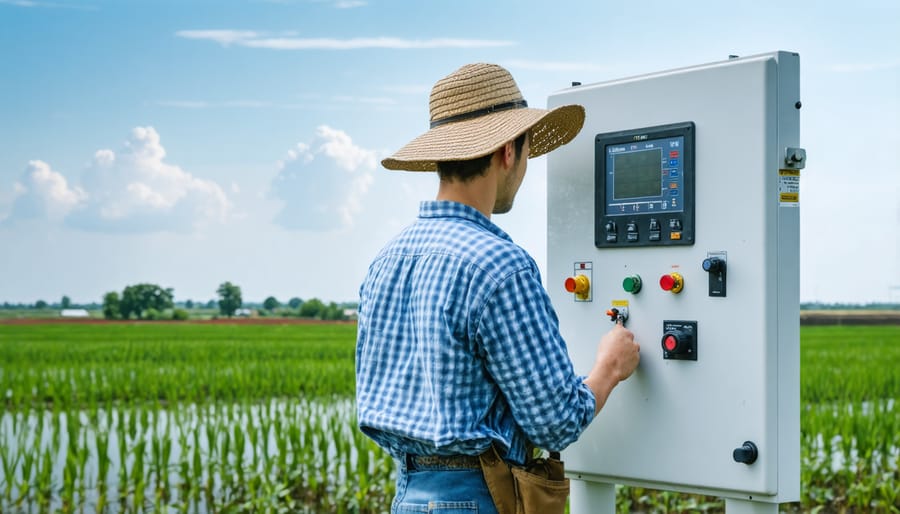
Energy-Efficient Recycling Methods
In Alberta’s hydroponic operations, energy efficiency isn’t just good for the environment – it’s essential for the bottom line. Smart pumping systems using variable frequency drives (VFDs) can reduce electricity consumption by up to 50% compared to traditional constant-speed pumps. These systems automatically adjust their power output based on current water demands, ensuring optimal energy use throughout the day.
Local farmer Sarah Thompson from Red Deer implemented a gravity-fed filtration system that leverages natural water flow, minimizing the need for electrical pumping. “We’ve cut our energy costs by 30% while maintaining excellent water quality for our lettuce production,” she notes.
For smaller operations, solar-powered pumps are gaining traction, particularly in southern Alberta where we receive abundant sunlight. These systems can be coupled with smart controllers that optimize pump operation during peak sunlight hours, storing excess energy for cloudy days.
Biological filtration methods, like constructed wetlands and beneficial bacteria colonies, reduce the need for energy-intensive mechanical filtration. These natural systems not only clean the water but also add beneficial minerals that support organic certification requirements.
Heat exchange systems can recover warmth from return water, reducing the energy needed to maintain optimal temperatures. Several Calgary-area farms have reported heating cost reductions of 40% after implementing these recovery systems.
Remember to regularly maintain and clean your filtration components – a clean system is an efficient system, requiring less energy to operate effectively.
Alberta Success Stories
Red Deer Valley Organics
Located just outside of Red Deer, Alberta, Red Deer Valley Organics has emerged as a pioneer in organic hydroponic farming, operating a 2,000-square-metre greenhouse facility that produces leafy greens and herbs year-round. Owner Sarah McKenzie implemented an innovative water recycling system in 2019 that has reduced their water consumption by 95% compared to traditional farming methods.
The facility’s closed-loop system captures and filters all water runoff, which is then tested and rebalanced with organic nutrients before being recirculated. “We’re using about 250 litres of fresh water per day to grow what would typically require 5,000 litres in conventional farming,” explains McKenzie. Their system incorporates biological filtration using beneficial bacteria and enzyme treatments that maintain water quality while adhering to organic certification standards.
What sets Red Deer Valley apart is their community-focused approach to sustainability. They host monthly workshops for local farmers interested in transitioning to organic hydroponics and have developed partnerships with nearby organic farms to create a complete nutrient cycling program. Plant waste is composted and used to create organic fertilizer tea, which is then filtered and introduced back into the hydroponic system.
The farm’s success has inspired several other Alberta operations to adopt similar practices, demonstrating that organic hydroponics can be both environmentally sustainable and economically viable in the Canadian climate.
Lessons from the Field
Third-generation organic farmer Sarah McKenzie from Lacombe shares her journey of transitioning to hydroponic systems while maintaining organic certification. “The key is starting small and scaling gradually,” she advises. “We began with a 100-square-meter greenhouse and focused on perfecting our nutrient solution before expanding.”
Local farmers have developed several successful water-smart practices that combine traditional organic principles with modern hydroponic efficiency. James Thompson of Red Deer emphasizes the importance of regular water testing: “We monitor EC and pH levels twice daily, adjusting our organic nutrients accordingly. This vigilance has reduced our water usage by 40% compared to soil-based methods.”
Another valuable insight comes from Carmen Rodriguez, who operates a year-round hydroponic facility near Edmonton. “Temperature control is crucial in Alberta’s climate. We’ve found that maintaining water temperature between 18-22°C optimizes nutrient uptake and reduces stress on the plants.”
Common challenges reported by local growers include maintaining consistent organic nutrient levels and preventing biofilm buildup in irrigation lines. Most have found success using approved organic cleaning solutions and implementing weekly system maintenance schedules. The community’s collective experience shows that success lies in careful planning, diligent monitoring, and staying connected with other organic hydroponic farmers in the region.
Implementation Guidelines
Getting Started
Before diving into your organic hydroponic journey, you’ll need to gather essential components and create the right environment. Start with a well-insulated greenhouse or indoor growing space that maintains temperatures between 18-24°C. Your basic setup should include growing trays, a reliable pump system, and food-grade storage tanks for your nutrient solution.
For organic certification compliance, ensure all growing containers and piping are made from food-grade materials – stainless steel and food-grade plastics are ideal choices. You’ll need organic-approved growing media such as coconut coir, organic rockwool, or expanded clay pellets.
Consider implementing efficient water conservation strategies from the start. Many Alberta farmers find success with a recirculating system that includes biological filtration to maintain water quality while reducing waste.
Essential monitoring tools include pH meters, EC meters, and dissolved oxygen meters. Start small with a pilot system of 10-15 plants to learn the basics before scaling up. Remember to check with your local organic certification body to ensure your setup meets all requirements.
Cost Analysis and ROI
Initial investment in an organic hydroponic system typically ranges from $15,000 to $45,000 for a 100-square-metre setup, depending on automation levels and equipment quality. However, Alberta farmers report recovering these costs within 2-3 growing seasons through increased crop yields and premium pricing for organic produce.
Operating costs average $2.50-3.50 per square metre monthly, including organic nutrients, electricity, and water. While this is slightly higher than conventional hydroponics, the 15-25% premium commanded by organic produce more than offsets the difference. Local farmers have reported net profits of $25-35 per square metre monthly during peak seasons.
Water cost savings are substantial, with systems typically using 90% less water than traditional soil farming. Energy efficiency measures, such as LED grow lights and solar panels, can reduce operating costs by 30-40% over time. Labour costs generally decrease by 25% compared to conventional farming, as automated systems handle many routine tasks.
For small-scale farmers, starting with a modular system allows for gradual expansion as profitability increases. Many Alberta growers have successfully secured grants and sustainability incentives, further improving their ROI timeline.
As we’ve explored throughout this article, organic hydroponic water recycling systems represent a significant step forward in sustainable agriculture for Alberta farmers. These systems not only conserve our precious water resources but also demonstrate that organic certification and soilless growing can work hand in hand. By recycling up to 95% of water used, these systems offer substantial cost savings while maintaining the high standards required for organic certification.
The success stories we’ve seen across Alberta, from small-scale greenhouse operations to larger commercial facilities, prove that these systems are both practical and profitable. Farmers report average water savings of 70-80% compared to traditional growing methods, while maintaining or even improving crop yields.
Looking ahead, the future of organic hydroponic water recycling appears promising. Emerging technologies in filtration and nutrient management continue to enhance system efficiency, while growing consumer demand for organic produce supports the economic viability of these investments. For Alberta farmers considering the transition, the initial setup costs are increasingly offset by long-term operational savings and environmental benefits.
As our climate continues to change and water becomes an ever more precious resource, these systems offer a sustainable path forward. The combination of water conservation, organic growing practices, and efficient production methods positions Alberta farmers at the forefront of agricultural innovation. By embracing these systems, we’re not just growing food – we’re nurturing a more sustainable future for Canadian agriculture.

